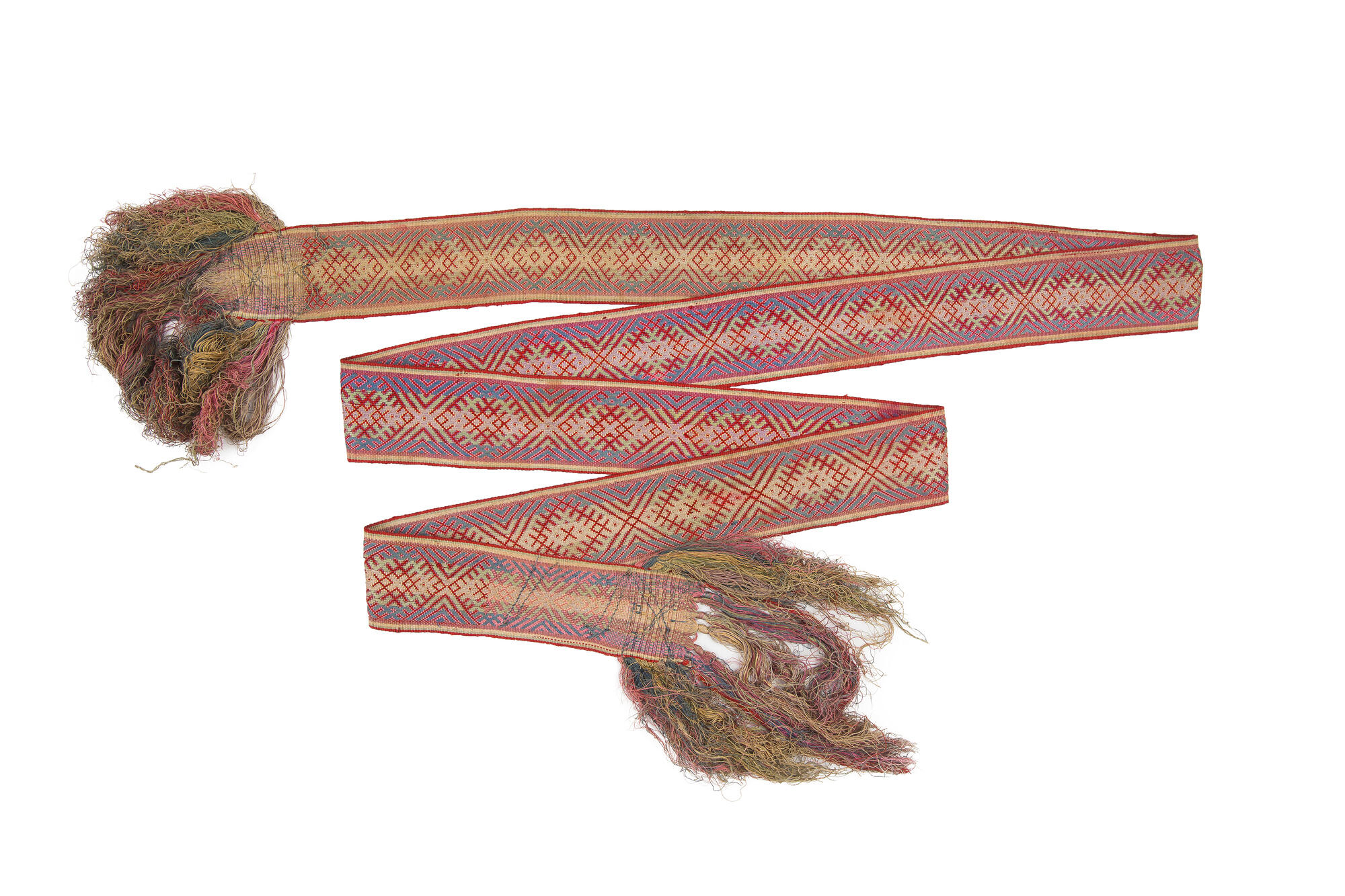The Transbaikal Regional Museum of Local Lore houses a narrow thin silk homespun belt. It was an obligatory element of men’s and women’s costume of the Semeiskie — a community of Old Believers who were forced to relocate from Poland to Transbaikalia in the 18th century. The Semeiskie used bright expensive fabrics for their clothing items: satin, cashmere, canvas, silk and velvet.
The belt of 6.5 centimeters in width was made in the 1920s–1930s; the item was transferred to the museum after an ethnographic expedition. It was worn over a sundress and under a zapon — a traditional apron. Decorations and the size of the belt were different: some belts could reach 15 centimeters in width and 3.5 meters in length. Ornamented belts were popular among the Semeiskie in the Republic of Buryatia. Such items were decorated with embroidery and patterns. In Transbaikalia, Old Believers wore monochrome accessories made of fabric scraps. They sewed colorful longitudinal stripes on them or did not decorate them at all.
Various districts in Transbaikalia established their own rules and traditions of sewing and wearing the belt. In the 2010s, researchers analyzed the results of several expeditions and concluded that in the Bichursky District both types of the belt were common — with patterns and with colored stripes, whereas in the Krasnochikoysky District it was possible to find only one, without ornaments.
Belts of the Bichursky Semeiskie were simple in design, 2.5 to 3.5 meters in length and 30 to 60 centimeters in width. This clothing item was made of dark fabric and decorated with colorful longitudinal stripes, or ornaments. In the Bichursky district, the Semeiskie wore such belt only over outerwear, and rarely over a shirt. They often wrapped it around the waist several times and tucked the ends inside or fastened on a side with a pin.
The Chikoysky Semeiskie preferred to wear belts embroidered with longitudinal stripes, without a pattern. They tied them differently: the belt was wrapped twice around the waist, tied in a simple knot and then the ends were thrown over the belt, letting them fall down on the left side.
In the Krasnochikoysky District, both men and women wore such belts. They were used to belt sundresses, shirts and outerwear.
The belt of 6.5 centimeters in width was made in the 1920s–1930s; the item was transferred to the museum after an ethnographic expedition. It was worn over a sundress and under a zapon — a traditional apron. Decorations and the size of the belt were different: some belts could reach 15 centimeters in width and 3.5 meters in length. Ornamented belts were popular among the Semeiskie in the Republic of Buryatia. Such items were decorated with embroidery and patterns. In Transbaikalia, Old Believers wore monochrome accessories made of fabric scraps. They sewed colorful longitudinal stripes on them or did not decorate them at all.
Various districts in Transbaikalia established their own rules and traditions of sewing and wearing the belt. In the 2010s, researchers analyzed the results of several expeditions and concluded that in the Bichursky District both types of the belt were common — with patterns and with colored stripes, whereas in the Krasnochikoysky District it was possible to find only one, without ornaments.
Belts of the Bichursky Semeiskie were simple in design, 2.5 to 3.5 meters in length and 30 to 60 centimeters in width. This clothing item was made of dark fabric and decorated with colorful longitudinal stripes, or ornaments. In the Bichursky district, the Semeiskie wore such belt only over outerwear, and rarely over a shirt. They often wrapped it around the waist several times and tucked the ends inside or fastened on a side with a pin.
The Chikoysky Semeiskie preferred to wear belts embroidered with longitudinal stripes, without a pattern. They tied them differently: the belt was wrapped twice around the waist, tied in a simple knot and then the ends were thrown over the belt, letting them fall down on the left side.
In the Krasnochikoysky District, both men and women wore such belts. They were used to belt sundresses, shirts and outerwear.



